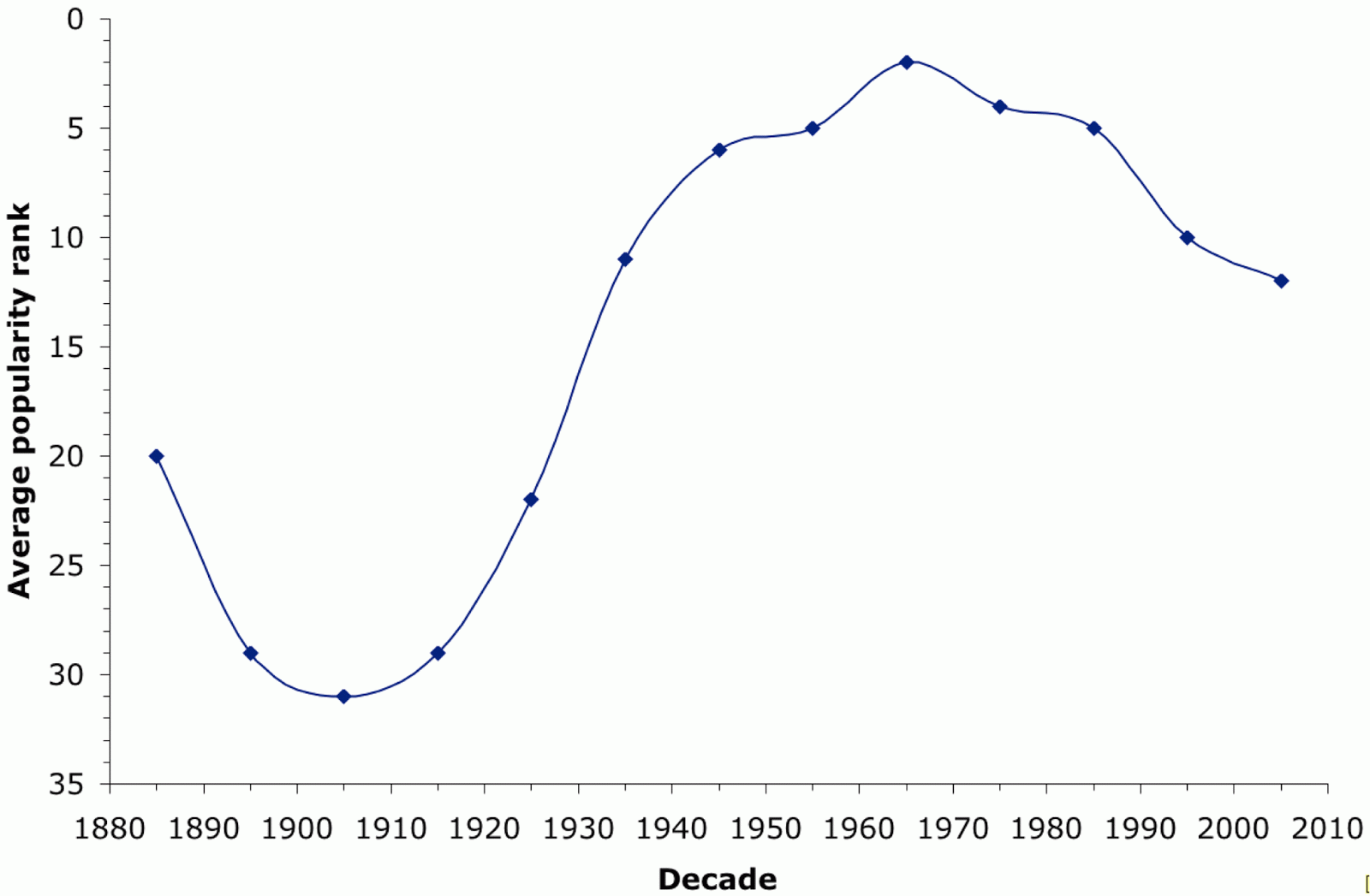In Australia at the time I was born, the most popular first name for boys was "David" and the second most popular was "Andrew". Not unexpectedly, the most popular middle name was "Andrew" and number two was "David". It then comes as no surprise to you that I ended up with this pair of given names.
Names come and go in popularity (these are called fads), and if your parents have no imagination then you will grow up knowing that you are not unique, because half the people in your classroom will have the same name as yourself. You may even end up being numbered (David #1, David #2, etc). What's worse, if you are not careful then you may end up doing the same thing to your own children.
Indeed, having a common name has only one known advantage — no matter where you go in the world everyone can recognize it, although they may not always spell it and pronounce it the way you expect (David, Davide, Dawit ...). Therefore, you will have no problems making restaurant bookings where ever you happen to be (see Leonard S. Bernstein. 1981. Never Make a Reservation in Your Own Name. Rand McNally).
These days in Australia, "David" struggles to be in the top 100 in popularity for boys. However, currently it appears to be in the top 10 in places like Armenia, Austria, Hungary, Italy, Spain and Israel (in 2012 or 2013), as well as the top 20 in Poland and Portugal. This information comes from The Baby Name Wizard. This site has current lists for many countries (Popular Names From Around the World), but has historical data only for the USA.
So, let's look at the U.S. data in more detail. As for Australia, the peak popularity in the USA was from 1955-1965, as shown in the first graph.
 |
| Note that the peak is truncated from 1950-1960. |
The site's Name Mapper web page has annual data for each state from 1960-2009, which is precisely 50 years. These data show the ranking of names by popularity within each state. The average rank for the name "David" across the 50 states is shown in the next graph. "David" was one of the top 10 names for boys born from 1936-1992, the #1 name in 1960, and it remains inside the top 20 to this day.
We can also look at the data for each state individually, as shown in the next graph, where darker shading represents greater popularity of the name. From the peak in the 1960s there was a steady decrease in almost every state until 1995, after which the popularity has been more erratic. For example, in 1960 "David" was the #1 boys name in 28 of the 50 states (and in the top 5 in every state), but by 1968 it was not #1 anywhere. The last time it was ranked #1 was in Utah in 1970, which was also the last year in which it was in the top 6 in every state.
 |
| Note that the states are grouped and colored geographically / culturallu. |
Only in California and Texas has the name stayed in the top 10 over the past 50 years. In the other states it has stayed in the top 50 or so, except for North Dakota, where it is currently struggling to stay in the top 100. In Nevada and Alaska it has even made a bit of a comeback in the past 10 years.
We can look at the relationship between the states using a phylogenetic network. The next graph is a NeighborNet (based on the manhattan distance) of the 1960-2009 data for the popularity ranking of "David" as a boy's name. States near each other in the network have a similar naming popularity, while states further apart are progressively more different from each other. The network shows a simple trend of increasing average popularity of "David" from the top-left to the bottom-right.
I have also colored the states using the same color scheme as for the previous graph (ie. geographically / culturally). Note that the orange, red, yellow and blue states are fairly neatly grouped, indicating that their alleged geographical / cultural similarity extends to the popularity of given names ("David" has continued to be popular in all of these states). The purple, brown and green states are not grouped very much, indicating much more diversity in the popularity of "David". For example, "David" has continued to be popular in New York and New Jersey but not in Maine, New Hampshire or Vermont. The extreme disinterest of North Dakotans in the name is very clear.
The fall of "David" is not as bad as that of "James" and "John", which were in the top 3 most popular names in the USA all the way from the 1880s to the 1950s, but which are now in 17th and 27th place, respectively (see the timeline graph in the Name Voyager).
I am not sure what has led to the eclipse of these names, other than the whims of faddishness. For example, in Britain and Ireland the name "Harry" has shot to the top in recent years (guess why!), while it still languishes near #700 in the USA. Otherwise, "Noah" and "Liam" seem to have the most widespread popularity for boys in the western world at the moment.
Footnote: I actually got the name Andrew because it is my father's middle name, and his father's before him, and his father's first name.



No comments:
Post a Comment